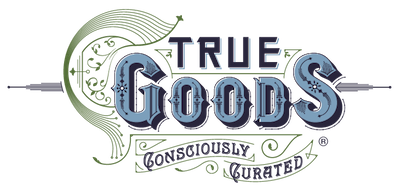
Breast milk is best, but whether you're feeding breastmilk or formula in a bottle, use this guide from EWG to feed your baby safely.
Breastfeed Whenever Possible
Breast milk is the best source of nutrition for babies, and contains essential fatty acids that help bolster babies' bodies against the impacts of toxic chemicals. However, there are many reasons why families rely on formula for some or all of their baby's diet.
Most babies in the US receive some formula during their first year of life, with 70 percent of babies receiving some formula by 3 months of age (CDC 2007). These babies need a safe and healthy source of food, and formula should be manufactured in a way that avoids contamination with hormone disrupting chemicals.
Formula-Feeding
Powdered formulas are the best choice for parents who want to avoid bisphenol A in their baby's diet. While powdered formula has not been tested for BPA, it is diluted with much more water than liquid formulas which reduces the amount of BPA that the baby consumes in each feeding. Nestlé has made unsubstantiated claims that they don't use any BPA to line their powdered formula cans. Nestlé, Enfamil and Similac use a mixed metal and cardboard package with less BPA-coating. Second best are Earth's Best Organic and PBM's store-brand powdered formulas that use a fully metal can.
Some liquid formulas are sold in plastic, mostly polyethylene and polypropylene, which do not contain any BPA. Avoid any plastic containers that are rigid and transparent, marked with "PC". All liquid formulas sold in metal cans are lined with BPA-epoxy, which has been shown to leach into the product.
If you buy formula in metal cans choose the concentrated type, which is diluted with water prior to feeding. Avoid ready-to-eat formula in metal cans, which has the highest BPA leaching potential.
Bottle Nipples
Choose bottle nipples made from silicon. They are the most durable and inert options. Latex rubber nipples can cause allergic reactions and can contain impurities linked to cancer (Freishtat 2002; Westin 1990). The same goes for pacifiers. Throw away any nipple or pacifier that is discolored, thinning, tacky or ripped.
Bottles
There has been a lot of attention recently about BPA leaching from baby bottles and sippy cups. It appears, however, that babies fed liquid formula could have much more intense exposure to BPA from the formula itself. Even so, parents should still choose bottles that don't leach any BPA. Glass bottles are an excellent choice for their safety and purity.
More manufacturers are also making bottles and sippy cups out of safer plastics such as polyethylene, polypropylene or polyamide. That said, ideally you'd be ditching all plastics. At the very least, avoid all polycarbonate, which is a transparent (either clear or tinted), rigid or inflexible plastic. These bottles may be marked with the letters "PC." Polycarbonate plastics are sometimes marked with the recycling #7, which is a miscellaneous category, so not all #7 plastics are harmful.
Your pediatrician may recommend plastic bottle liners if your baby is colicky. If not, avoid using them - the manufacture and disposal of plastic liners raise environmental concerns. And never overheat formula in a plastic liner. The soft plastic liners may leach chemicals into formula, especially when heated.
What Type of Water?
If your water is fluoridated, use a reverse osmosis filter to remove fluoride, which the American Dental Association recommends avoiding when reconstituting formula (ADA 2006). If your water is not fluoridated, use a carbon filter, either a pitcher-style or one that attaches to your tap. If you choose bottled water make sure it's fluoride-free. Be aware that the cost of bottled water may add up to more money than a home reverse osmosis system.
Expressing Breast Milk
Make sure your breast pump tubes, shields, and jars are BPA and phthalate free. This is important as pump parts withstand repeated washings in hot water.
Cleaning & Sterilizing
Bottles, nipples, pacifiers, breast shields, pump tubing and containers should be sterilized before first use. After that, washing with hot soapy water or the top shelf of the dishwasher should be sufficient. Avoid sterilizing in the microwave or frequent use of boiling water since both will speed the breakdown of the plastic.
Warming Bottles
Warm bottles of formula or breast milk in a bowl of hot water. Do not microwave them or place them in boiling water. In addition to creating a hazard for baby, these extreme heats weather the plastics.
~ Special thanks to Environmental Working Group who authored the original guide on October 11, 2008. Copyright © Environmental Working Group, www.ewg.org. Reproduced with permission. ~
